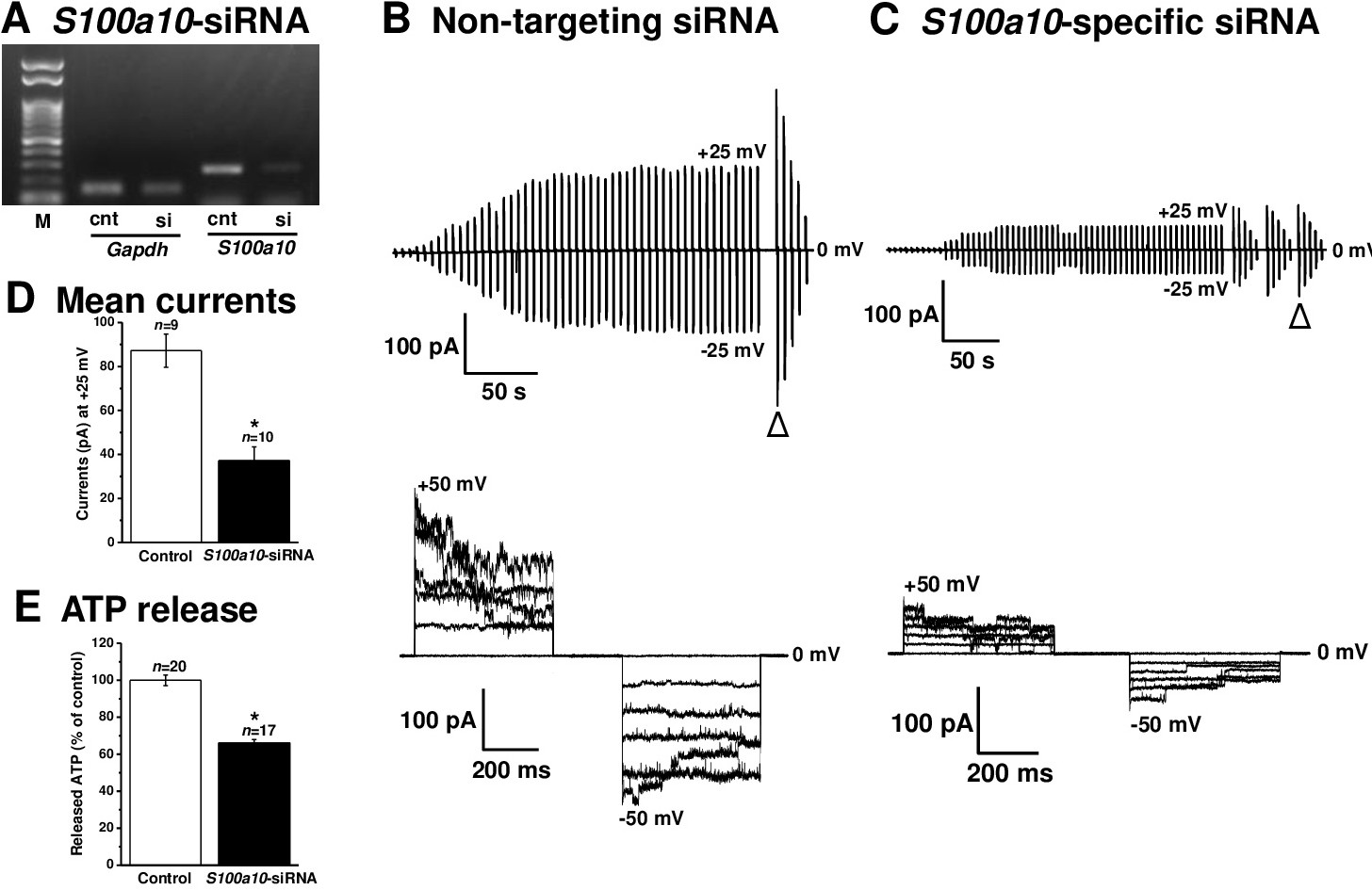Fig. 5. Downregulation of Maxi-Cl activity by siRNA-mediated gene silencing of the expression of an obligated ANXA2 partner protein, S100A10, in C127 cells. A. RT-PCR analysis of expression of S100A10 mRNA (S100a10) in the cells transfected with non-targeting siRNA (cnt) or S100a10-specific siRNA (si). GAPDH mRNA (Gapdh) was used as an internal control. M: molecular size markers (100-bp ladder). The data represent quadruplicate experiments. B, C. The effects of transfection with non-targeting (negative control) and S100a10-specific siRNAs on Maxi-Cl activity. Upper panels show the representative time courses of Maxi-Cl current activation after patch excision from C127 cells transfected with non-targeting (negative control) siRNA (B) and S100a10-specific siRNA (C). During the records, alternating pulses from 0 to ±25 mV were applied in the presence of 2 mM Ca2+. Lower panels show the voltage-dependent inactivation pattern of Maxi-Cl currents elicited by applying step pulses (500 ms) from 0 to ±50 mV in 10-mV increments at the time points indicated by triangles in upper panels. D, E. Summary of the effects of non-targeting siRNA (Control) and S100a10-specific siRNA on the mean Maxi-Cl currents recorded at +25 mV (D) and on hypotonicity-induced ATP release from C127 cells (E). Each column represents the mean ± SEM (vertical bar). *p<0.05 (Student's t-test) vs Control.
